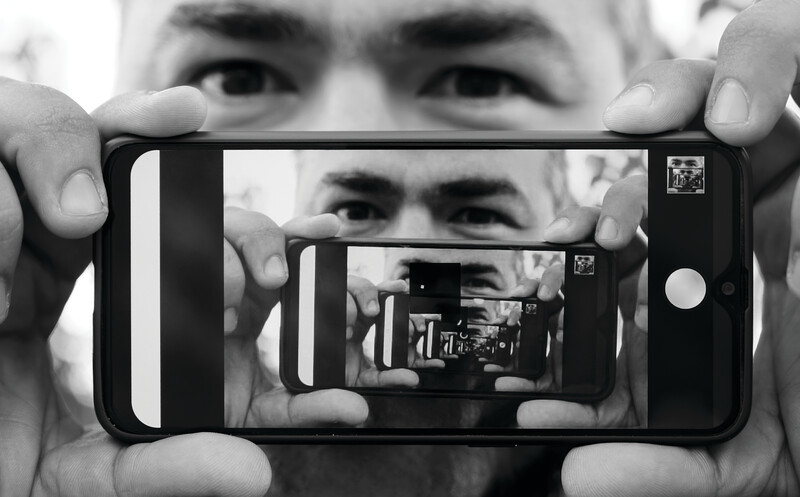After watching a shirt being wafted into the air as it dries over a hearth, the tinkerer Joseph Montgolfier decides to try lighting a fire under a balloon—and creates the first flying machine.
After observing an art object swinging from a cathedral's ceiling, Galileo mulls over the mechanisms of a pendulum-driven clock—and produces one 50 years later.
Adapting a wine press, Johannes Gutenberg invents the first printing press, which leads not only to the rise of a newly literate class, but later to their increased need for spectacles.
A group of Murano glass blowers expelled from Venice because of the fire hazards from their furnaces collectively learns so much about the properties of glass that, eventually, future scientists, mathematicians, technologists, and engineers acquire the know-how to build spectacles, microscopes, telescopes, and cameras that can even take pictures of the moon.
These scenarios depicted on recent PBS science documentaries dramatically illustrate both the light-bulb moments of discovery and the years of systematic exploration that have led to the innovations we now take for granted. An interesting takeaway is how discoveries morph into other discoveries; geniuses and countless unknown collaborators depend on one another to make unanticipated connections among science, technology, engineering, and math—as well as many other areas of study, including the arts and literature. With all the complex problems in need of solutions today, one cannot help but hope that today's students will follow in these innovators' footsteps.
This issue of Educational Leadership addresses the growing STEM education movement (science, technology, engineering, and mathematics). Although some say the need for STEM workers is at a crisis point, others assert the workforce "crisis" is exaggerated. Most, however, remain convinced that all students could profit from more in-depth science literacy regardless of the career path they take (pp. 79, 84, 86, 91). Here are some of the points our authors make about the education students need:
Real-world learning is central. Jo Anne Vasquez writes that STEM education "removes the traditional barriers separating the four disciplines and integrates them into real-world, rigorous, relevant learning experiences for students." No matter the level of STEM education a school may be able to provide, "Application is at the heart of STEM education. When students ask, ‘Why do I have to learn this?' a STEM experience provides an answer."
New standards offer opportunity. Propelling the STEM movement are the Next Generation Science Standards, which require students to engage in doing science by modeling, analyzing, and designing, Jeff C. Marshall writes. He urges that teachers start small as they implement the new standards but prepare to run a marathon rather than a sprint.
Let the tinkering begin. Bronwyn Bevan and colleagues from the Exploratorium explain how the maker movement celebrates creativity and entrepreneurship. They describe how to bring tinkering to school with simple tools and materials and without resorting to step-by-step, recipe-like activities. Making objects float in wind tubes and building circuits can encourage students to collaborate, persist at their work, and learn that second drafts are part of learning.
All students need STEM. Computer science knowledge can no longer be reserved for elite students, Jane Margolis and colleagues note. Christine M. Cunningham and Melissa Higgins make a similar point about engineering, another field in which women and minorities are disproportionately underrepresented. Because traditional activities may fail to attract many students, we must reframe challenges to demonstrate how engineering can help people and society.
Instill the value of science. There are many wonderful STEM school models and programs that authors describe in this issue (pp. 54, 68). Lee Shumow and Jennifer A. Schmidt remind us that scientists often name a high school teacher as the person who sparked their initial interest in science. Expressing your enthusiasm and interest in learning science may well inspire those who will need to figure out how we got to now and where we are going in the future.
<P ID="scherer-audio"><!-- Start of Brightcove Player --><!--div style="display:none"></div--><!--By use of this code snippet, I agree to the Brightcove Publisher T and C found at https://accounts.brightcove.com/en/terms-and-conditions/. --> <!--<object id="myExperience3880888278001" class="BrightcoveExperience"> <param name="bgcolor" value="#FFFFFF" /><param name="width" value="570" /><param name="height" value="380" /><param name="playerID" value="18377529001" /> <param name="playerKey" value="AQ~~,AAAAAmGjiRE~,escbD3Me8-wT_coVb7sTe18vG6vv3Oyk" /> <param name="isVid" value="true" /><param name="dynamicStreaming" value="true" /> <param name="@videoPlayer" value="3880888278001" /> </object>--><!-- This script tag will cause the Brightcove Players defined above it to be created as soonas the line is read by the browser. If you wish to have the player instantiated only afterthe rest of the HTML is processed and the page load is complete, remove the line.--><!-- End of Brightcove Player --><!-- use this code for HTML --> <!-- <object id="flashObj" width="486" height="412" classid="clsid:D27CDB6E-AE6D-11cf-96B8-444553540000" codebase="http://download.macromedia.com/pub/shockwave/cabs/flash/swflash.cab#version=9,0,47,0"><param name="movie" value="http://c.brightcove.com/services/viewer/federated_f9?isVid=1" /><param name="bgcolor" value="#FFFFFF" /><param name="flashVars" value="videoId=3880888278001&playerID=11490813001&playerKey=AQ~~,AAAAAmGjiRE~,escbD3Me8-zfW2J4SI2ZSHPsqtup23tT&domain=embed&dynamicStreaming=true" /><param name="base" value="http://admin.brightcove.com" /><param name="seamlesstabbing" value="false" /><param name="allowFullScreen" value="true" /><param name="swLiveConnect" value="true" /><param name="allowScriptAccess" value="always" /><embed src="http://c.brightcove.com/services/viewer/federated_f9?isVid=1" bgcolor="#FFFFFF" flashVars="videoId=3880888278001&playerID=11490813001&playerKey=AQ~~,AAAAAmGjiRE~,escbD3Me8-zfW2J4SI2ZSHPsqtup23tT&domain=embed&dynamicStreaming=true" base="http://admin.brightcove.com" name="flashObj" width="486" height="412" seamlesstabbing="false" type="application/x-shockwave-flash" allowFullScreen="true" swLiveConnect="true" allowScriptAccess="always" pluginspage="http://www.macromedia.com/shockwave/download/index.cgi?P1_Prod_Version=ShockwaveFlash"></embed></object> -->




